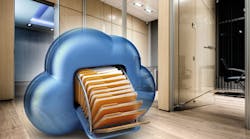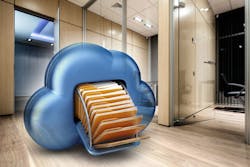David Rauterkus, DDS
Like many dentists, I want my practice to run as smoothly and efficiently as possible, so I have invested in several pieces of technology to help me achieve this. One of the best decisions I have made for my practice's efficiency was purchasing practice management software that allowed me to have completely paperless charts and a cloud-based patient education system.
Moving to a digital chart: not such a daunting task
When many practices think of moving to digital charts, they envision spending countless hours and weekends transferring all of their paper files to the computer. The idea of potentially shutting down their practices to accomplish this task makes many disregard the option altogether. But the process of going paperless doesn't need to be so stressful. My practice was able to fully eliminate paper charts in 2006 by gradually adding more components to our Eaglesoft practice management software, such as charting modules and patient notes. This allowed us to learn and master each aspect of going paperless before committing to the next, which greatly decreased the stress of learning.
We didn't shift patient records from paper charts to the digital platform in one fell swoop. Instead, we entered each patient's information into our system when he or she came in for an appointment. This was much easier for us than completely shutting down on a weekend, and it made for a much less abrupt transition.
Benefits and savings of adding technology
Dental practices are businesses that need to make money, so any new technology brought in needs to have an impact on the bottom line and not just be a "cool tool" to use. But with a practice management system, it's often difficult to determine a hard cost-benefit because the system itself isn't creating more money. However, it's important to look at the efficiency benefits and revenue-finding features that practice management systems have. They are what will ultimately save your practice time and create more streams of income.
Become more efficient
From the very beginning of each appointment to its end, being completely digital increases the efficiency of my practice. By having patients enter their health information into an in-office tablet, everything gets added to their medical files. Consequently, my front desk staff doesn't need to manually enter information, which allows them to focus on other tasks.
It's also extremely easy to make a treatment plan and present it to a patient because I can access his or her chart to explain exactly what is needed in a step-by-step manner. By doing this, I have greatly increased my case acceptance rate, since a digital explanation is often much clearer than a verbal explanation.
Find new revenue
Using a practice management system's features is one of the best ways to determine how much money a good practice management system can bring to a practice. In Eaglesoft, I can use several different features to determine potential sources of revenue, such as Revenue Opportunities and Money Finder. These features allow me to identify patients who haven't scheduled a hygiene recall or who have incomplete treatment, as well as many other opportunities. These are great tools that increase my practice's profitability and cash flow.
Increase case acceptance
Getting patients to accept treatment plans is vital for practice growth and profitability, but it's not always easy to make patients understand the need for treatment. In order to accept a treatment plan, patients generally need to know what is involved in a prescribed procedure and why it will help them. Cloud-based patient education systems such as my CAESY Cloud system can be effective for many reasons.
Present information to patients anywhere, not just in the office
The dental office can be an intimidating place for many patients, so it's not always the best atmosphere for absorbing important information. By having my patient education system online, I can play a video presentation of a treatment for a patient and email the presentation once the visit is over. This gives the patient the chance to watch it at home with family or friends. For many patients, this makes for a much better viewing experience and can be the difference in deciding to accept a treatment.
Use uniform language for presenting treatments
Patients often see multiple staff members during each visit, and if each of us explains a treatment option in slightly different words, patients can easily become confused. By listening to a prerecorded video, patients are able to get the same message time after time. These videos have also helped my staff, as I've noticed all of us using the same verbiage as our CAESY presentations to describe procedures to patients. When we're presenting information in the same way as the video a patient just watched, it makes for a powerful tool.
Adopting new technologies can seem like a scary task at first, but it's not nearly as daunting as many dentists make it out to be. When done correctly, it can make your practice more efficient and more profitable. When choosing which practice management and patient education systems to use, make sure you do your research first and ensure the system you choose can perform all of the functions you'll eventually want to use.
David Rauterkus, DDS, received his undergraduate degree from UCLA in 1985 and his doctorate from the University of the Pacific in 1988. He opened a private practice in Poway, California, in 1992. He is a member of the American Dental Association, the California Dental Association, and the San Diego County Dental Society. He is also a San Diego CEREC Member, and he has attended a wide variety of continuing education courses on subjects including CEREC and implant restorations.







